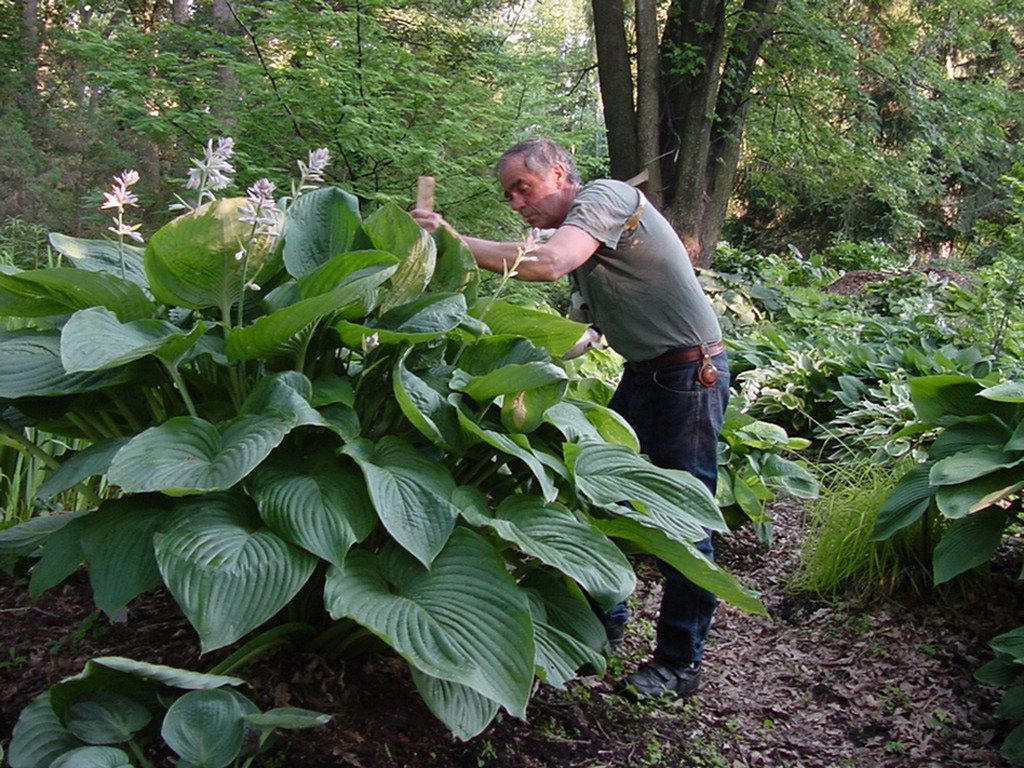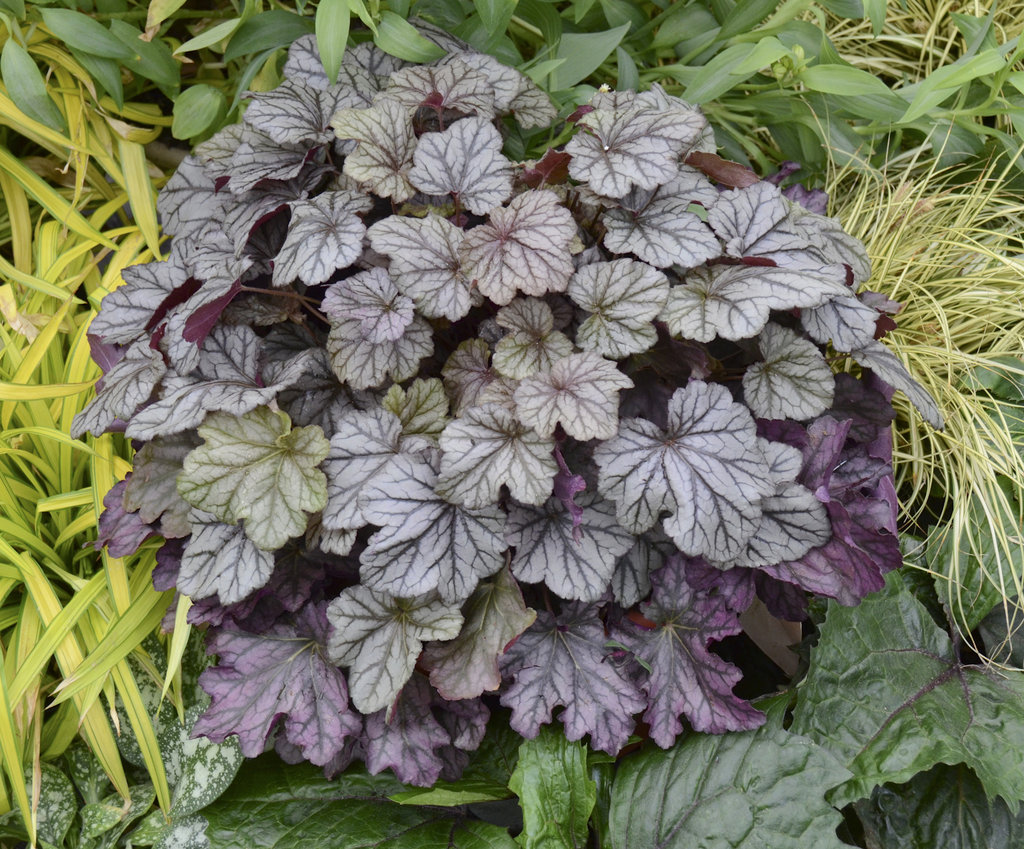Winning the Battle: Perennials That Thrive in Shade
Learn which perennials thrive in shade.
If you live in an established neighborhood where towering trees abound, you know all too well the challenges and opportunities of gardening in shade. If you’re like me, you’ve experimented a bit to see just what will grow under those trees and you know where the pockets of precious sunshine fall on summer afternoons. Not all shade is created equal when it comes to growing plants. You can read more about that here. While some perennials tolerate shade, others thrive in it. Take heart--no matter what kind of shade you’re gardening under, there is a perennial that will grow there. Here are five kinds of perennials that will thrive in your shade garden.
HOSTAS FOR SHADE
Let’s list this one first since it is typically the first perennial that comes to mind when you think of shade gardens. It’s for good reason—hostas absolutely love shade. Indeed, they languish in the hot afternoon sun so your shady landscape will provide them just the right conditions.
However, hostas also like to have a fairly consistent supply of moisture to flush out their big, beautiful canopy of foliage, so planting hostas in hard, dry clay under your trees is not ideal. Amend your soil when planting hostas to give them nutrient rich, loamy earth in which to spread their extensive roots. Taking the time and effort to do so will benefit your hostas much more than planting them in poor soil and having to douse them with fertilizer every month to compensate for the poor soil.
Hostas grow well in all but the warmest parts of the country as they are hardy in zones 3-9. However, they are one of the favorite foods of deer, so if you have these four legged friends in your garden you may wish to look further down this list for other perennials you can grow in shade.
 Recommended Hostas:
Recommended Hostas:
- ‘Autumn Frost’—One of the very best hostas for spring color, its frosty blue and radiant gold edged leaves will light up your landscape and containers with exuberant color.
- ‘Empress Wu’—Would be more aptly named “Impress You” since this enormous green hosta will surely impress all your friends when it reaches its mature size of 3-4ft tall by 5-6ft wide in about five years.
- ‘Wheee!’—What hosta could be more fun with a name like this? Its extremely rippled foliage is something you’ll just want to reach out and touch, and when you do you’ll be impressed by its thick leaf substance. The slugs won’t be so impressed and will move on to easier fodder.
LIGULARIA
From the most common shade perennial, Hosta, we move on to an underused but equally deserving shade perennial called Ligularia. If you’re looking for bold texture and great flowers for partial shade conditions, this is it. Ligularia forms a large, dense mass of ornamental, toothed leaves that are the consistency of leather so you know you won’t have to worry about deer eating this durable perennial.
Most Ligularias, like ‘Bottle Rocket’, have dark green leaves, but a few cultivars like ‘Britt-Marie Crawford’ have dark purple foliage. The green leafed types typically produce brilliant yellow flower spikes in midsummer, while the dark foliage types often produce golden orange, daisy-shaped flowers in late summer.
Regardless of which type of Ligularia you’re growing, you’ll want to choose a partially shaded location in which to plant it. It will be right at home at the edges of ponds and streams where its roots can sink deep into that rich, cool, moist soil below. Consistent moisture is key to growing great looking clumps of Ligularia. If you have sandy or dry soil, you’ll want to amend it with nutrient rich, organic components when you plant it and choose a site that is shaded in the afternoon. Ligularia is hardy in zones 4-9.
FOAMFLOWERS (Tiarella)
If you garden in shade, you’ve come to understand the importance of great foliage and texture as it is often these two elements that keep our gardens looking beautiful all season long. Flowers can be scarce in shade, but great foliage adds interest over the long term. One of the best perennials for partial to full shade that offers year-round foliage interest is the foamflower, or Tiarella.
This evergreen perennial excels at showing off its ornamental foliage all year, often emerging with brighter coloration in spring, mellowing in summer, and coloring up again in the fall and winter months. Softly fragrant, bottlebrush-shaped flowers, which are typically white or pale pink in color, dance above the feathery textured foliage for many weeks in spring. Foamflowers’ patterned foliage complements most other shade perennials like ferns, hostas, and sedges perfectly, never stealing the show but always looking neat and lovely.
Look for Proven Winners' ‘Cutting Edge’ foamflower which has finely dissected green leaves with dramatic dark burgundy centers and creamy bottlebrush-like flowers.
CORAL BELLS (Heuchera)
One of the most versatile perennials you can grow in zones 4-9 is Coral Bells (Heuchera). Here’s a plant that will grow in any amount of sunlight, from full sun to full shade, as long as you water it. Ideally, coral bells prefer partial shade and average moisture levels. However, if you plant it in full sun, you’ll need to give it a little extra water and if you plant it in full shade, you’ll have to wait a little longer for it to grow to full size. If you garden in clay soil, be sure to amend it when planting coral bells as they detest heavy, wet soils especially in winter.
There are many, many kinds of coral bells available today, so how do you know which are the best for your climate? Here’s a hint: feel the leaves before you buy. If you live in a part of the country that is relatively cool and dry (low humidity levels), those varieties with thinner, shinier leaves should grow very well for you. If you live where it is relatively warm and sticky (high humidity levels), those varieties with larger, fuzzier leaves should grow better for you. Both shiny leaf and fuzzy leaf coral bells are now available in a broad range of colors to suit your gardening palette.
Recommended Coral Bells:
- Dolce® 'Frosted Berry'—This heat tolerant cultivar will dazzle you in spring with its remarkably iridescent purple leaves with black veining. It grows quickly into a large, robust clump in the landscape and turns a metallic pewter color in the heat of the summer.
- Dolce®'Appletini'—If you’re looking to brighten up the shadiest corners of your garden, try this luminescent chartreuse to yellow selection. Its large, fuzzy leaves form a large, billowy cloud that sets off green ferns and yellow variegated hostas with perfection. Just remember its light colored foliage will burn in the sun, so give it the protection it needs and it will perform beautifully for you.
FOAMY BELLS (Heucherella)
If foamflowers and coral bells are growing well for you in your zone 4-9 shade garden, then be sure to give foamy bells or Heucherella a try. This interspecific genus was created by crossing the pollen from Tiarella and Heuchera flowers to come up with a new kind of perennial that is a blend of both parents. Since both of its parents grow well in shade, foamy bells also grows well there. Follow the instructions for growing coral bells above and you’re sure to have success.
Advancements in breeding new cultivars of foamy bells has yielded some amazing results in the last decade or so. Yellow, red, orange, or green cultivars are now available, many with a contrasting color in the center of each leaf. These decorative foliage plants can be used throughout the shade garden to add a bright spot of season-long color to places that need it most. As an added bonus, you’ll have pretty white bottlebrush flowers in late spring.
Grow Fun and Games® 'Eye Spy' for its attractive foliage and its bubblegum pink flowers that bloom for many weeks. Amber yellow spring foliage has deep rose centers and mellow to chartreuse green with a silver overlay.




